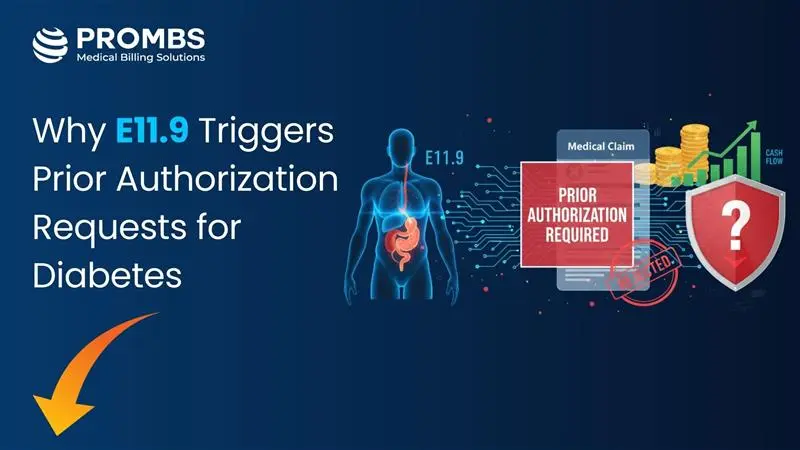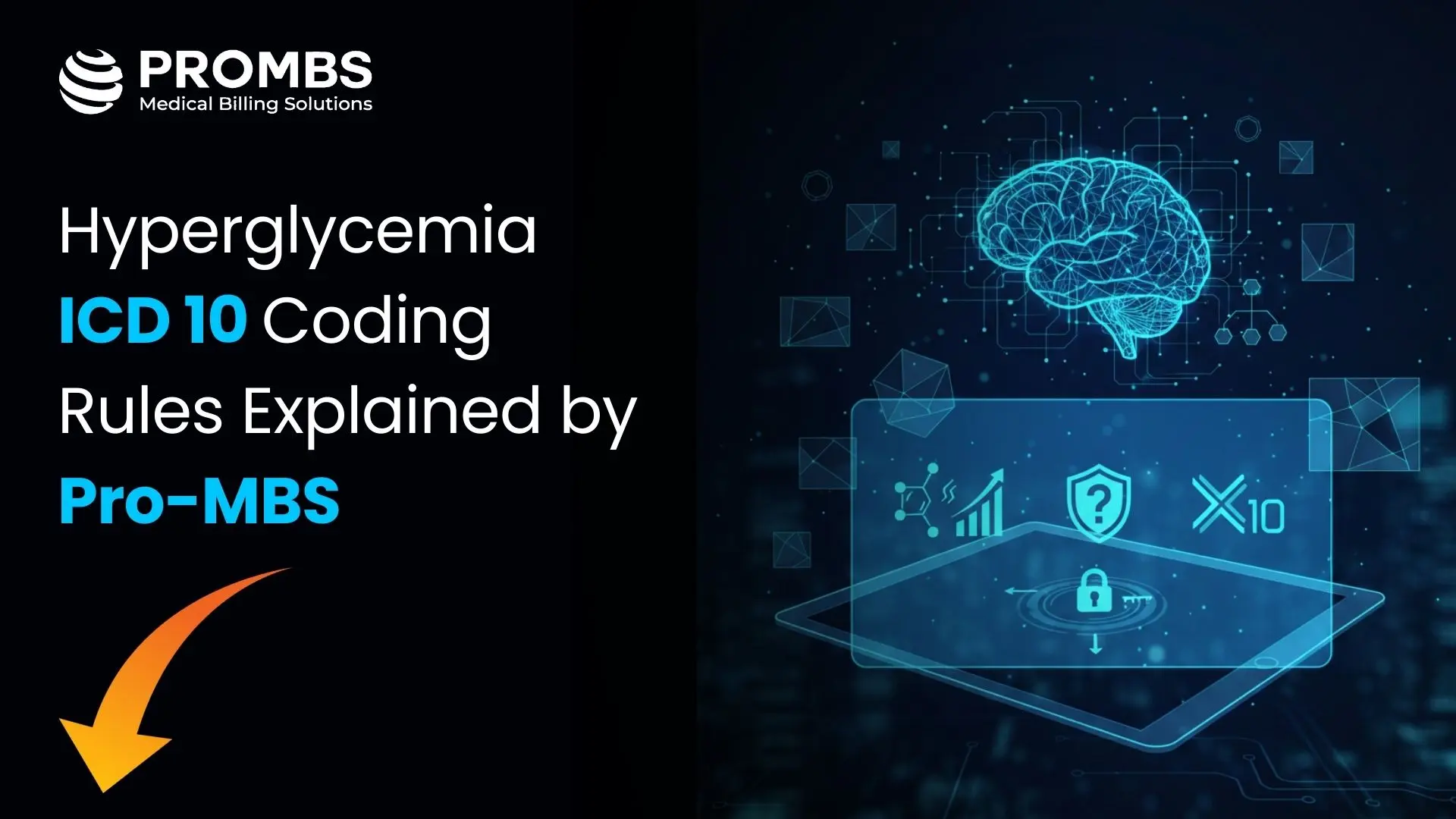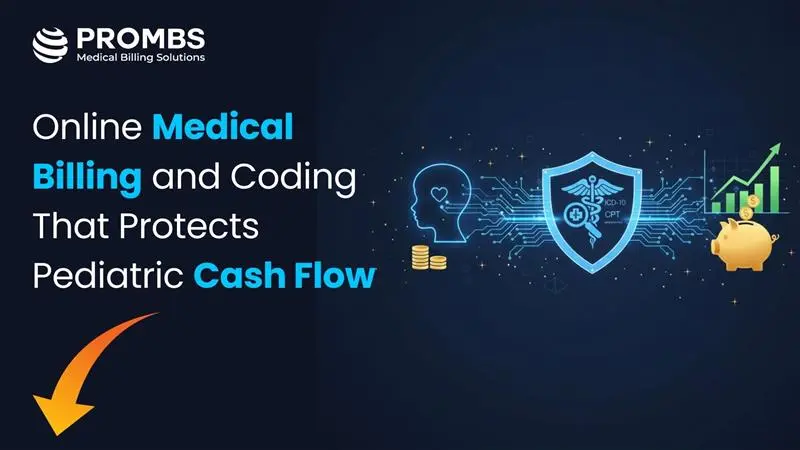Why Accuracy in POS Coding Matters
In professional medical billing, Place of Service (POS) codes are not just administrative markers, they determine how claims are adjudicated and how much providers are reimbursed. One of the most commonly used POS codes in outpatient care is POS 11. This code identifies services performed in a physician’s office and plays a significant role in determining whether a claim is paid at a facility or non-facility rate.
For providers, coding POS 11 correctly ensures:
- Compliance with CMS and commercial payer guidelines.
- Maximum allowable reimbursement under the correct rate schedule.
- Reduced risk of claim denials or audit-triggered recoupments.
Facility vs. Non-Facility POS Codes in Medical Billing
In medical billing, the Centers for Medicare & Medicaid Services (CMS) assigns specific codes to indicate the physical location where a patient received services. These codes are called Place of Service (POS) codes.
A POS code is a two-digit number used on claims to identify where the service was performed. This information helps insurance companies apply the correct reimbursement rate whether at a facility rate or a non-facility rate based on who bears the cost of overhead.
POS codes are grouped into two main categories:
Facility POS Codes
Facility POS codes are used when a patient receives care in a location owned or operated by a hospital, healthcare system, or other facility that covers the cost of operations, equipment, and staffing. In these situations, the professional provider is reimbursed at the facility rate, which is lower than the non-facility rate, because the facility itself bills separately for its overhead through a facility fee.
Common Facility POS codes include:
| POS Code | Description | Meaning |
|---|---|---|
| 21 | Inpatient Hospital | The patient was formally admitted to a hospital and stayed overnight (or longer) for treatment. |
| 22 | On-Campus Outpatient Hospital | The patient received care in a hospital-owned outpatient department located on the hospital’s main campus. |
| 23 | Emergency Room – Hospital | Services were provided in a hospital-based emergency department. |
| 20 | Urgent Care Facility | The patient was treated in an urgent care center, which offers immediate outpatient care for acute illnesses or injuries. |
| 31 | Skilled Nursing Facility (SNF) | The patient received skilled nursing or rehabilitation services in a facility licensed as a SNF. |
| 32 | Hospice Facility | Services were provided in a freestanding hospice facility for end-of-life care. |
| 24 | Ambulatory Surgical Center (ASC) | The patient underwent surgical procedures in a facility licensed as an ASC, which provides same-day surgery without hospital admission. |
Note: While POS 20 (Urgent Care) appears in this list, it is not always treated as a facility POS in the same way as hospital outpatient settings. Its classification and payment methodology may vary depending on payer rules and contract terms. Always verify with payer-specific guidance before assigning this code.
Non-Facility POS Codes
Non-facility POS codes are used when services are delivered in provider-owned locations, such as private practices, clinics, or other outpatient settings where the provider is responsible for operational expenses. Because no separate facility fee is billed, the provider is reimbursed at the non-facility rate, which is typically higher to account for rent, utilities, staff salaries, and equipment costs.
Common Non-Facility POS codes include:
| POS Code | Description | Meaning |
|---|---|---|
| 11 | Office | A provider-owned location where health professionals routinely examine, diagnose, and treat patients on an outpatient basis. This is the most common POS code for private practices. |
| 12 | Home | The patient’s residence, where healthcare services are delivered outside of a facility setting. |
| 03 | School | A school-based location where health services are provided to students. |
| 49 | Independent Clinic | A free-standing healthcare facility not part of a hospital, skilled nursing facility, or other institutional provider, offering diagnostic, therapeutic, or preventive services. |
Defining POS 11
CMS’s Official Definition
According to CMS, POS 11 – Office refers to:
A location, other than a hospital, skilled nursing facility (SNF), military treatment facility, community health center, State or local public health clinic, or intermediate care facility, where the health professional routinely provides health examinations, diagnosis, and treatment of illness or injury on an ambulatory basis.
- Independent physician offices.
- Group practices owned and operated by providers.
- Privately leased spaces dedicated to patient care.
POS 11 vs. POS 22 (and Other Facility Codes)
Key Differences
POS 11 – Office (Non-Facility Rate):
- Owned/operated by the provider or practice.
- No facility fee billed separately.
- Higher professional reimbursement rate under the Medicare Physician Fee Schedule (MPFS).
POS 22 – On-Campus Outpatient Hospital (Facility Rate):
- Owned/operated by the hospital.
- Facility fee billed separately by the hospital.
- Lower professional reimbursement rate for the physician’s claim.
Example Reimbursement Gap
For CPT 99214 (Established Patient Office/Outpatient Visit, Level 4):
- POS 11 non-facility rate: ~$150 (physician bears overhead).
- POS 22 facility rate: ~$110 (hospital bills a separate facility fee).
Incorrectly coding POS 22 as POS 11 or vice versa can trigger overpayments or underpayments, both of which create compliance and revenue risks.
POS Codes and Their Role in Reimbursement
Impact on Payment Rates
For example, POS 11 (Office) qualifies for the non-facility rate, which is typically higher because the provider absorbs all operational expenses, including staff salaries, rent, and equipment costs. Conversely, a facility POS such as POS 22 (On-Campus Outpatient Hospital) results in lower professional reimbursement, as the hospital bills separately for a facility fee. Using the wrong POS code can lead to either underpayment or overpayment, both of which carry financial and compliance risks.
Note: Example rates shown are illustrative; actual reimbursement amounts vary by geographic region and payer fee schedules
Ensuring Fair Compensation
The Role of POS 11 in Claim Submission
While POS codes influence reimbursement, they are equally critical in the claims submission process. POS 11 specifically tells the payer that the service was provided in a provider-owned office setting, aligning the claim with compliance requirements and the payer’s adjudication logic.
Data Accuracy and Clean Claims
On the CMS-1500 claim form, POS 11 is reported in Box 24B; in electronic claims (837P), it appears in Loop 2300, Segment CLM05-1. Entering POS 11 correctly ensures the payer’s system applies the right rate and prevents claim edits or rejections caused by mismatched location data.
Compliance Validation
Payers often cross-reference POS codes with a provider’s registered addresses in NPPES. If the POS code on a claim does not match the practice’s official location records, the claim may be denied or flagged for prepayment review. Correct use of POS 11 ensures the claim passes this compliance check.
Reducing Denials and Delays
Incorrectly coding the place of service is a common cause of claim denials. For instance, an established patient visit performed in an office must have POS 11, while the same service in a hospital outpatient clinic requires POS 22. Verifying the POS before submission helps prevent unnecessary delays, accelerates payment, and keeps the revenue cycle moving efficiently.
Common Mistakes to Avoid When Using POS 11
Using POS 11 for Hospital-Based Clinics
One of the most frequent errors is applying POS 11 to services rendered in a hospital-owned outpatient clinic. Even if the physician works in that location every day and provides care similar to that offered in a private office, the determining factor is ownership and billing structure.
If the hospital owns or operates the clinic and bills a facility fee separately, the correct code is typically POS 22 (On-Campus Outpatient Hospital) or POS 19 (Off-Campus Outpatient Hospital). Using POS 11 in this situation can result in overpayments that will need to be refunded after an audit, and in some cases, it may trigger compliance investigations.
Ignoring Ownership Structure
Providers sometimes assume that leasing space automatically qualifies as provider-owned for POS 11 purposes. However, CMS uses the terms “provider-based” and “freestanding” rather than just “ownership.” A more precise standard is “operational control” or “provider-based status,” which focuses on who controls staffing, scheduling, and resources. Ownership in this context refers to operational control, not just the physical lease.
In arrangements involving Management Service Organizations (MSOs) or hospital-affiliated partnerships, the entity controlling staffing, scheduling, and equipment procurement may be the true “owner” in CMS’s view. If operational control lies outside the provider’s practice, POS 11 may not apply, even if the provider’s name is on the lease agreement.
Documentation Shortfalls
Applying POS 11 to Telehealth Services
Another common error is coding telehealth encounters as POS 11 simply because the provider was physically located in their office during the visit.
For Medicare telehealth services, POS 11 may still be used with modifier 95 to receive non-facility rates, depending on payer rules. POS 02 or POS 10 apply in other scenarios. Always verify with payer-specific guidelines.
CMS guidelines for telehealth require the use of specific POS codes along with applicable telehealth modifiers. Using POS 11 incorrectly in these cases misrepresents the place of service and can result in claim rejections or post-payment audits.
Overlooking Changes in Location Status
Practice locations sometimes change ownership or operational status, especially during mergers, acquisitions, or hospital affiliations. A clinic that once qualified as POS 11 may transition to facility status without staff fully realizing the billing implications. If claims continue to be coded with POS 11 after such a change, the provider risks months of incorrect billing. Regularly reviewing and updating each practice location’s status in NPPES and internal billing systems helps prevent this type of oversight.
Best Practices for Accurate POS 11 Coding
Confirm Provider Ownership of the Location
POS 11 is strictly intended for provider-owned offices. This means the practice or physician entity must hold full legal and operational authority over the physical location where services are delivered. Ownership is not just about leasing space, it extends to controlling the business operations, managing patient flow, and making independent staffing and equipment decisions. If the space is owned or managed by a hospital or other facility, even if the provider operates there daily, it should not be coded as POS 11.
Ensure Services Are Rendered on an Ambulatory Basis
The defining feature of POS 11 is that care is provided to patients who are not admitted to a hospital or other inpatient facility. Services should be delivered in a clinical setting where patients arrive, receive treatment, and leave without requiring an overnight stay. This aligns with CMS’s definition of an “office” setting and differentiates POS 11 from inpatient or hospital-based codes.
Verify That No Facility Fee Is Billed Separately
Maintain Operational Control Over Staff and Equipment
For a location to qualify as POS 11, the provider must manage the staff and equipment used for patient care. This includes hiring and supervising clinical and administrative staff, procuring and maintaining medical equipment, and ensuring compliance with safety and quality standards. If these elements are handled by a facility owner outside of the provider’s practice, the location may not meet POS 11 requirements.
Train Front-Desk and Billing Staff on POS Identification
Accurate coding begins at the point of patient registration. Front-desk and billing staff should be trained to identify the correct POS based on ownership, location type, and payer rules. Training should include real-world examples and payer-specific scenarios so staff can recognize subtle differences between settings that may look similar but require different codes.
Conduct Regular Compliance Audits for POS Accuracy
A best practice is to include POS verification in quarterly or semi-annual compliance audits. Reviewing claims specifically for POS accuracy allows billing teams to identify patterns of incorrect coding before they become significant revenue or compliance issues. These audits should compare claim data against contractual agreements, NPPES listings, and actual operational control records.
Stay Updated on CMS POS Code Changes
The POS code set is periodically updated by CMS to reflect changes in healthcare delivery models. Practices should establish a process to review updates at least annually or sooner if CMS releases mid-year revisions. Relying on outdated POS code definitions can lead to systematic billing errors and potential overpayments that must later be refunded.
Document Compliance with POS 11 Criteria
Impact on Claims Submission Process
Where to Enter POS on the CMS-1500
On the CMS-1500 form, the POS code is entered in Box 24B. For electronic claims (837P), POS data is sent in Loop 2300, Segment CLM05-1.
Denial Prevention Tips
- Cross-check POS with the practice’s NPI location data in NPPES.
- Ensure payer provider files list the location as non-facility if POS 11 is used.
- Review remittance advice for patterns of POS-related adjustments.
Quick Reference Table – Key POS 11 Guidelines
| Requirement | POS 11 – Office | POS 22 – On-Campus Outpatient Hospital |
|---|---|---|
| Ownership | Provider-owned | Hospital-owned |
| Facility Fee | No | Yes, billed separately |
| Rate Type | Non-Facility | Facility |
| Example CPT 99214 Reimbursement | Higher (~$150) | Lower (~$110) |
| Claim Form Location | CMS-1500, Box 24B | CMS-1500, Box 24B |
Conclusion – Final Recommendations for Providers
POS 11 is one of the most frequently used non-facility place of service codes, but its correct application requires a detailed understanding of ownership, operational control, and payer-specific rules. Accurate coding ensures optimal reimbursement, avoids compliance risks, and supports clean claims processing.
By training staff, auditing POS usage regularly, and staying aligned with CMS guidelines, providers can prevent costly errors and protect revenue integrity.



